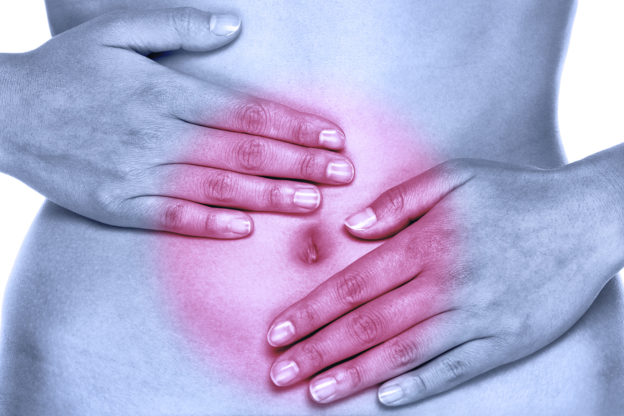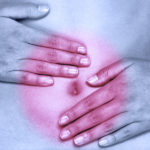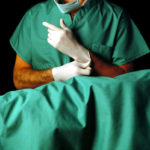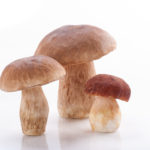By David Blyweiss, M.D., Advanced Natural Wellness
May 16, 2016
- Is it irritable bowel or something else?
- This bowel problem is running amok
- What to do when inflammation strikes
If you sometimes experience pain on the lower left side of your abdomen, you might think it’s a slight case of irritable bowel. Maybe it’s gas or something you ate.
Well, there’s another reason for abdominal pain, especially when it generally occurs on the left side. And you probably haven’t heard much about it. It’s called diverticulosis.
Diverticulosis occurs when you develop marble size pouches in your colon. And in many cases it never causes a problem. In fact, a large number of folks never even know they have it. So it sounds harmless enough, right?
Not necessarily. You see, there’s a complication that comes along with those colon pouches. They create a perfect place for stool, bacteria and undigested food particles to lodge.
When that happens, watch out! The resulting inflammation or infection can leave you with am extremely severe case of abdominal pain called diverticulitis. And it can easily land you in the emergency room.
The thing is, about one out of ever four people with diverticular problems experience diverticulitis at some point. Even worse, it doesn’t discriminate between age and gender.
Open your arteries, improve blood flow for a new health miracle...
Did you know your circulatory system has over 60,000 miles of arteries, veins and other blood vessels, if stretched end to end?
But as you age, your blood vessels undergo changes, which may cause them to stiffen, thicken and get clogged.
GOOD NEWS! Doctors have now identified a “Miracle Molecule” inside your arteries that helps OPEN your arteries and IMPROVE blood flow.
It’s what Dr. Valentin Fuster calls it, "One of the most important discoveries in the history of cardiovascular medicine."To you, that means...
- Healthy blood pressure
- Sharper mind and memory
- Skyrocketing energy and muscular strength
- Increased pleasure and passion in the bedroom
- Improved circulation to every cell and organ in your body
Go here to discover a new natural way to significantly boost the levels of this miracle molecule in YOUR body NOW!
It may strike when you are in your 60’s – but it’s also common in men and women who aren’t even 45 years old yet!
Now, a hundred years ago diverticulosis was relatively unheard of. Today it’s running amok. Here’s why…
What Causes Diverticular Problems in the first Place?
For years it was believed that lack of fiber played a crucial role in the development of diverticulosis. However, newer research indicates fiber may make symptoms worse.
This puts you in a difficult spot, because you don’t know which is true. Should you eat more fiber, or less?
I’ll make it easy for you. You should eat more of the right kind of fiber… and less of the wrong kind.
Case in point: Today’s grains aren’t anything like the ones your ancestors ate. They’ve gone from being an agricultural product, to a scientifically engineered and hybridized food product. This definitely affects the quality of fiber they contain.
The World's Quickest Solution for Ending Prostate and Urinary Misery
This has recently been revealed to be one of the only real breakthroughs in prostate health.
The seeds of a strange fruit (sometimes called "Chinese Apples") hold powerful phytonutrients that are a revolution in prostate health.
In fact, UCLA and Veterans Administration research have now proved this to be true.
Not only that, but it may be the worlds quickest solution for ending prostate misery.
Simply stated, these phytonutrients represent a huge step beyond beta sitosterol, saw palmetto, and other phytosterols alone.
Simply click HERE if you want to have fast prostate relief...restful, uninterrupted sleep...no more constant "urges to go"...enhanced virility...and optimal prostate support for life.
Plus, these days, everyone’s rushing to bulk up on non-soluble fiber. That’s the kind you get in most prepared breakfast cereals and high fiber snack bars. And a lot of it is synthetic.
This type of fiber acts as a bulking agent. It tends to move things along so waste passes more quickly from your intestines. But it does nothing to protect you against diverticular disease. It may even aggravate the problem.
The other type is called “soluble” fiber. Some foods high in this type of fiber include beans, figs, mangos, sweet potatoes, apricots, oranges and berries. Brussels sprouts, turnips and asparagus are also high in soluble fiber.
This type of fiber aids vital nutrient absorption by slowing digestion. Better yet, it goes through a fermentation process in your gut. This helps the “good” bacteria in your digestive system to flourish.
These good guys have an important role. They don’t just help you have regular bowel movements. They also help prevent bad bacteria from taking up residence in your colon, where they can accumulate in those diverticular pouches and set the stage for infection and inflammation.
Another thing that sets the stage for diverticular problems is when you don’t fully evacuate your bowels. And believe it or not, the modern toilet bowl actually impairs the ability of stool to leave your colon.
Sitting up straight on the toilet creates a natural kink in the lower part of your colon. This kink is designed to keep stool in. Without it, you would suffer incontinence. But you don’t want it interfering with complete emptying of your bowels.
A squatting position, on the other hand, opens the bowel and relaxes colon muscles for faster, easier and more complete elimination. That’s why I often recommend investing in a Squatty Potty.
Natural Tips to Clear up Symptoms of Diverticulitis
Diet is very important when it comes to preventing diverticulitis. Getting plenty of natural, soluble fiber from whole foods, limiting red meat consumption and staying away from sugars are great places to start.
But what can you do if you do find yourself with an attack of diverticulitis?
Give your colon a break. Switch to a liquid diet for a day or two so your colon can have time to recover. Some suitable options include low sodium broths, clear soups, water, tea, coffee and herbal teas.
Kill off bad bacteria. Coilloidal silver is a wonder antibiotic. It has the ability to destroy over 650 microorganisms at very low concentrations, and may help kill off some of the bad bacteria in your colon. Be sure to stick with products designated as “true colloidal silver”. These are the safest and most pure preparations. I recommend Natural-immunogenics “argentyn 23”.
Repopulate your digestive flora with a quality probiotic. A probiotic formula that contains a prebiotic along with lactobacillus, bifidobacteria and other strains of healthy bacteria. The higher the colony count, and the more live strains involved, the better off you’ll be.
SOURCES:
Nguyen GC, et al. Epidemiological trends and geographic variation in hospital admissions for diverticulitis in the United States. World J Gastroenterol. 2011 Mar 28;17(12):1600-5.
Peery AF, et al. Constipation and a low-fiber diet are not associated with diverticulosis. Clin Gastroenterol Hepatol. 2013 Dec;11(12):1622-7.
Hobson KG, et al. Etiology and Pathophysiology of Diverticular Disease. Clin Colon Rectal Surg. 2004 Aug; 17(3): 147–153.
Strate LL. Lifestyle factors and the course of diverticular disease. Dig Dis. 2012;30(1):35-45.
Iroha, et al. Antibacterial efficacy of colloidal silver alone and in combination with other antibiotics on isolates from wound Infections. Scientific Research and Essays. 2007. 2.8: 338-341.







